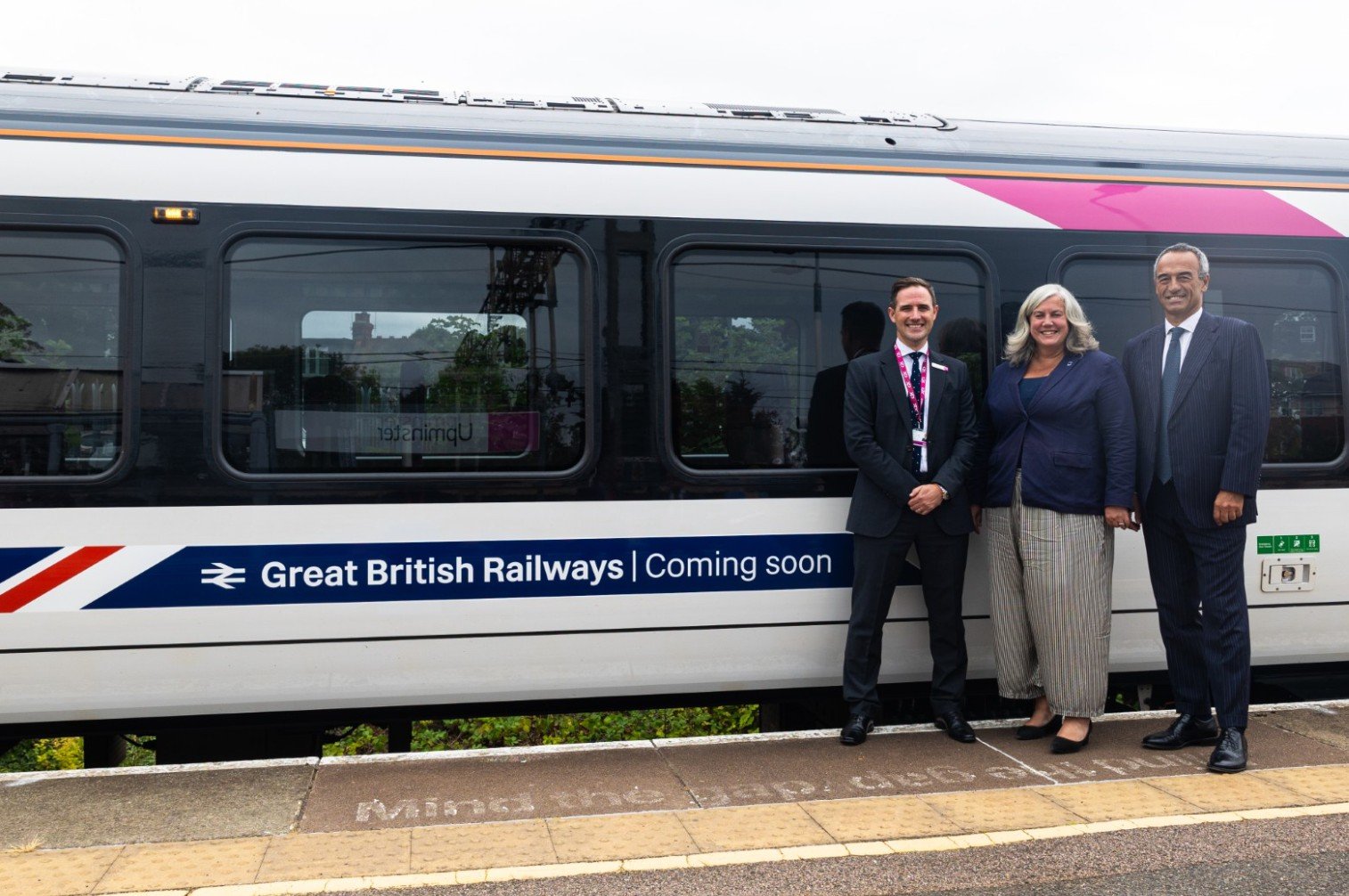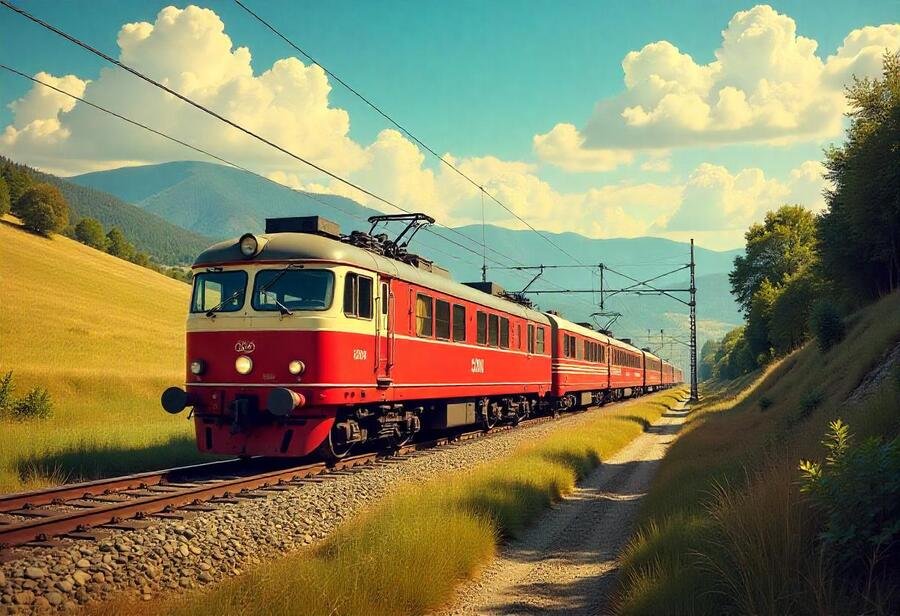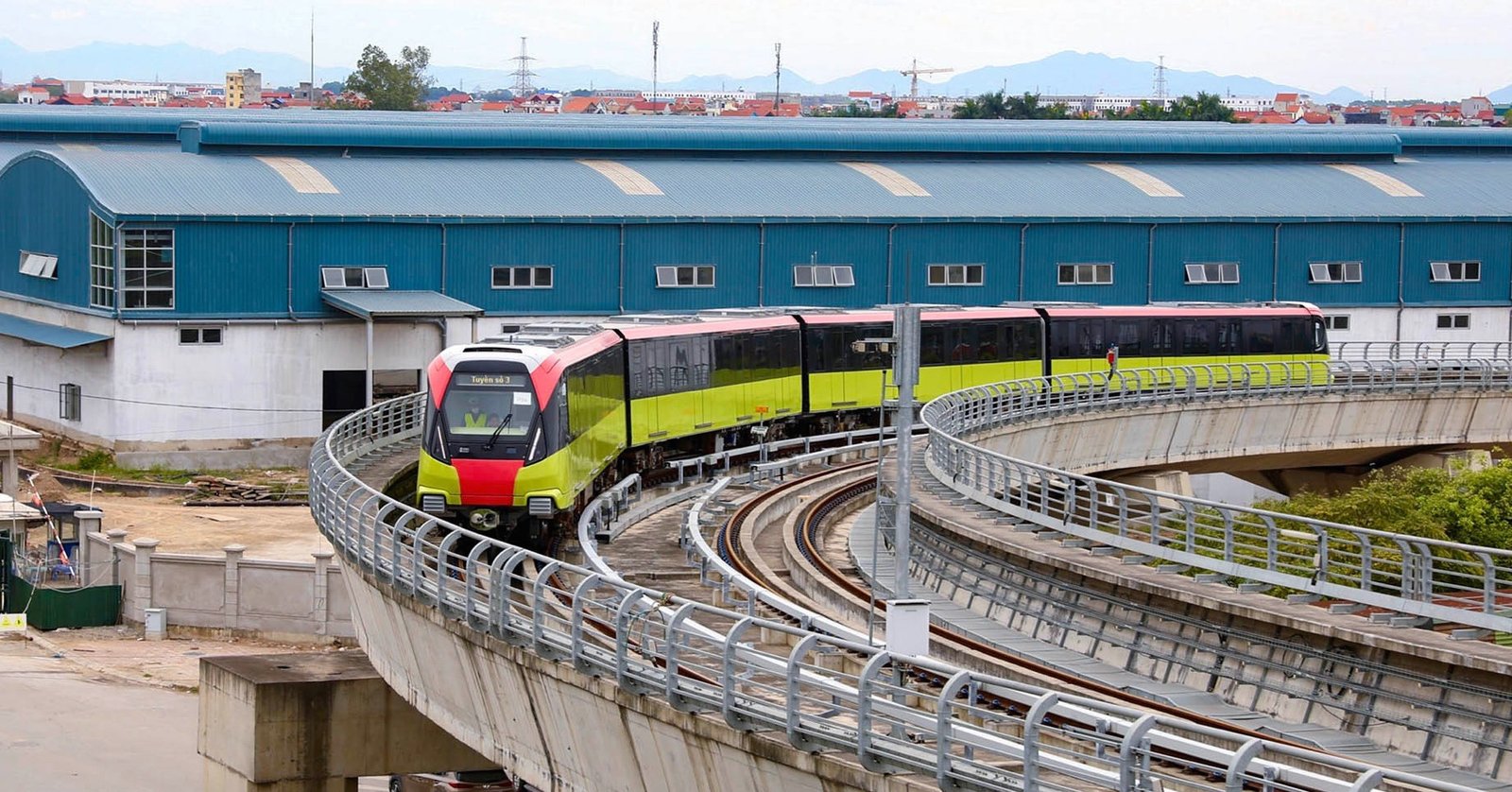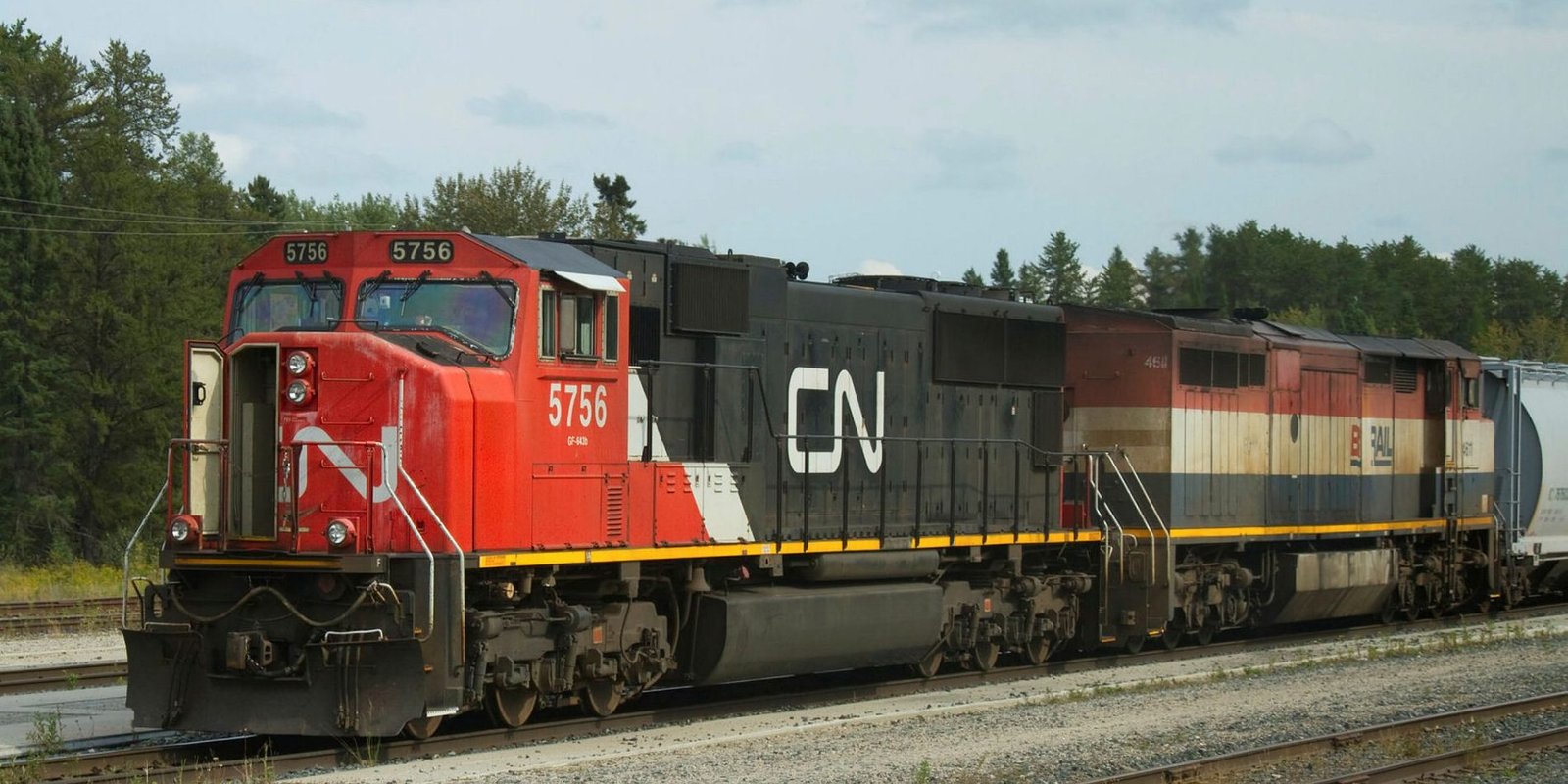Rail & Road
c2c transitions to public ownership

As the c2c rail franchise transitions to public ownership under the Department for Transport on, formally becoming c2c Railway Limited, Trenitalia reflects on what it describes a meaningful and productive chapter in its UK journey – one marked by sustained investment, operational innovation and a shared commitment to delivering high-quality rail services – while reaffirming its continued role in supporting the long-term development of the UK transport sector and contributing to national and regional economic growth.
While rail industry reform continues to take shape, Trenitalia says it remains firmly committed to its future in the UK market and to maintaining investment across the broader mobility ecosystem. This includes its recent application to operate high-speed services between London and Paris, forming part of a broader commitment to building a more interconnected and sustainable European rail network.
As part of the FS Group, with more than a century of rail experience across Italy and internationally, Trenitalia’s transition from franchise operator marks not an exit, but a repositioning to strategic partner, ready to contribute its expertise to the vision set out by Great British Railways and its interaction with local bodies while running the railway as a national network.
In doing so, Trenitalia continues to foster partnerships with UK-based SMEs, universities and innovation hubs, supporting knowledge exchange and long-term sector resilience.
Since acquiring c2c in 2017, it says its goal was ambitious: to translate the skills, discipline and customer-focused excellence developed in the highly competitive Italian market for British customers. This has included a significant focus on service quality, technological advancement and long-term value for passengers.
Over the past eight years, c2c has supported over 315 million passenger journeys and operated 935,000 services and has been consistently recognised as one of the UK’s most punctual train operators, achieving a 94.5% overall customer satisfaction score in most recent Transport Focus survey period – the highest of any UK train operating company.
A substantial programme of investment underpinned this performance. Highlights include the introduction of 10 new Alstom electric trainsets, representing a £100 million commitment to fleet modernisation, and the delivery of the UK’s first fully contactless national rail network, now used for over 10,000 daily taps across the c2c route.
In parallel, improvements to ticketing with Trenitalia’s fully digital PICO system, replacing multiple outdated legacy UK ticket systems, passenger compensation, and upgrades to station facilities have further contributed to a smoother, more modern customer experience.
Trenitalia’s management of c2c has also played a material role in supporting the wider regional economy and community. Each weekday, over 25,000 commuters rely on c2c services into London, with independent analysis showing that rail travel contributes approximately £590 million annually to businesses in the East of England.
Operational excellence has remained a consistent focus, supported by effective fare compliance measures that recovered £596,000 from evasion in the most recent year. c2c has also earned multiple independent accreditations recognising its commitment to passenger and staff safety, including certifications in Health & Safety, Safeguarding, Secure Stations and the White Ribbon initiative.
Complementing these efforts, working in lockstep with the government through targeted investments such as the Station Improvement Fund and the Customer & Communities Investment Fund (CCIF) has significantly enhanced the passenger experience by upgrading facilities and services across the network’s stations.
Ernesto Sicilia, Managing Director at Trenitalia UK, commented: “Our management of c2c has been grounded in a resolve for continuous improvement and being in tune with the needs of the communities we serve.
“As the franchise moves to public ownership, we acknowledge both the progress made and the ongoing challenges of unifying a fragmented rail industry. In the meantime, we will continue to support and deliver services on the Avanti West Coast franchise until it too transitions to public ownership in 2026.
“While our role as operator is ending, our dedication to sharing knowledge, supporting innovation and fostering collaboration remains unchanged. We recognise that building a resilient and integrated rail network takes time and Trenitalia is determined to play a constructive part in that journey.”
As the c2c franchise returns to public hands, Trenitalia has said it extends its sincere appreciation to the teams, passengers and industry partners who have contributed to this journey. Trenitalia has said it takes great pride in the achievements realised during this time and looks forward to contributing to the next chapter of UK rail.
Rail & Road
Renfe Achieves Record-Breaking Growth in First Half of 2025 with Over Two Hundred Seventy Million Passengers, Setting New Milestone in Spain’s Rail Industry

Sunday, July 20, 2025
Renfe has achieved a remarkable milestone in the first half of 2025, carrying over two hundred seventy million passengers, marking a 3% year-on-year increase. This unprecedented growth sets a new record for the Spanish rail operator and underscores the rising demand for rail travel across the country. The growth is driven by a combination of enhanced services, modernized fleet, and affordable fare schemes, which have all contributed to Renfe’s ability to meet the growing needs of both commercial and public service passengers. This milestone highlights Renfe’s position as the leading rail operator in Spain and reinforces its role in shaping the future of rail transportation.
Surge in Demand for High-Speed and Long-Distance Rail Travel
Renfe’s high-speed services, including AVE, Avlo, and Alvia, have seen a substantial increase in passengers. More than 17.9 million travelers used these fast services, reflecting a 10.9% rise compared to the same period in 2024. This surge is attributed to the convenience and speed of these services, which offer an attractive alternative to air and car travel for both domestic and international passengers.
The highest traffic day occurred on June 20, with over 135,600 passengers traveling on Renfe’s network, a testament to the growing demand for efficient rail connections across Spain. The impressive growth in high-speed rail travel shows that Spain’s rail network is becoming increasingly popular as a preferred method of transportation for a broad range of passengers.
Modernization of Fleet to Enhance Service and Capacity
One of the key contributors to Renfe’s growth is its continuous investment in modernizing its fleet and improving service offerings. In line with its strategy to improve passenger experience, Renfe has introduced the advanced S106 AVE and Avlo trains, which have replaced older Alvia models. These new trains are equipped with modern technology, offering better energy efficiency and enhanced comfort, which have contributed to the rise in ridership.
The introduction of these new trains has helped Renfe improve service quality and attract more customers. The modern fleet supports the growing demand for high-speed travel, ensuring that Renfe can maintain its competitive edge while providing a comfortable and efficient travel experience. With better capacity and shorter travel times, Renfe is well-positioned to continue expanding its ridership.
Growth Across Public Service Routes
Renfe’s public service routes have also experienced a boost in passenger numbers, reinforcing its overall growth. Public transport services saw a total of 259.5 million passengers, which represents a 2.8% increase compared to the previous year. The Cercanías network, which connects major cities and metropolitan areas, accounted for the majority of this growth, with 235.9 million passengers—a 3.91% increase over 2024.
Additionally, Renfe’s Avant services, which connect regional cities with high-speed rail options, saw a significant rise in passengers, reaching a total of 6.7 million. This was an increase of 139,000 compared to the first half of 2024, demonstrating the growing appeal of shorter high-speed routes.
Affordable Fare Schemes Fuel Growth
A major factor in Renfe’s success is its commitment to affordability and accessibility. Since 2022, Renfe has issued more than 21 million multitrip passes, making rail travel more affordable for regular commuters and frequent travelers. The multitrip pass system has proven to be extremely popular, with 7.1 million passes distributed in 2023 and 7.7 million in 2024. By mid-2025, Renfe had already issued more than 4 million passes, further boosting its ridership.
Renfe introduced new monthly passes in July 2025, offering unlimited travel across the Cercanías, Rodalies, and Media Distancia networks for just €20 ($22) for adults. Youth passengers, aged between 1999 and 2010, can access the same pass for €10 ($11), making travel even more affordable for younger commuters. These passes have helped increase the overall number of passengers using Renfe’s services, especially on the busy commuter lines.
Renfe’s Path to Continued Growth and Sustainability
Renfe’s ability to increase its ridership while maintaining affordability reflects its strong position as a leader in Spain’s rail transport sector. The company’s focus on fleet modernization, improved service quality, and cost-effective ticketing is driving its sustained growth. As Renfe continues to make strategic investments and enhancements to its services, it is well-positioned to meet the growing demand for efficient, sustainable, and accessible rail travel.
Renfe’s future growth prospects are promising, with ongoing efforts to expand its national network, improve customer experience, and enhance the sustainability of its operations. By balancing modern infrastructure with affordable fare schemes, Renfe is set to continue its expansion, further solidifying its status as Spain’s primary rail operator.
With its focus on providing high-quality services and enhancing connectivity across Spain, Renfe is poised for continued success in the coming years.
Rail & Road
By rail, road and sea: Western export infrastructure needs a refresh – The Hill Times
Rail & Road
Hanoi speeds up metro and railway industry development

The Hanoi Department of Construction announced it is accelerating steps to meet the goal of developing 15 urban railway lines, totaling about 600km, by 2045.
The city is currently rushing to complete procedures to begin construction on two urban railway lines in 2025, inclulding Line 2, Nam Thang Long – Tran Hung Dao section, 11.5km long, and Line 5, Van Cao – Hoa Lac section, 38.43km long.
This is part of Hanoi People’s Committee Resolution No188 to develop urban railways in three phases.
From 2024 to 2030, the city aims to complete about 96.8km, including Lines 2, 3, and 5, while preparing investments for 301km of Lines 1, extended 2A to Xuan Mai, Lines 4, 6, 7, 8, and those connecting satellite cities. The total estimated capital for this phase is about $14.6 billion.
From 2031 to 2035, Hanoi will complete an additional 301km of urban railways, with an estimated capital of about $22.57 billion. Once completed, urban railways will handle 35-40 percent of public passenger transport.
From 2036 to 2045, the city will complete the remaining 200.7km supplemented under the Capital Master Plan and revised General Plan. The estimated capital for this phase is $18.25 billion.
Developing the urban railway system will not only ease Hanoi’s urban traffic pressure but also promote sustainable, modern, and connected urban development. Once completed, the urban railway network will serve as the backbone of the public transport system, driving development in both the inner city and satellite urban areas.
Dang Huy Dong, Director of the Institute for Planning and Development Research, stated that completing the urban railway system in just under 12 years is a daunting task.
It may not be feasible without integrating TOD (transit-oriented development) urban models along metro station routes. This requires exceptional management that goes beyond current investment and construction regulations.
According to Dong, without solutions for management mechanisms and funding, continued reliance on ODA loans will hinder Hanoi’s ability to complete its historic urban railway mission. To secure funding, TOD planning and auctions for real estate investment rights in these areas are essential.
Public transportation includes various types, but only urban railways can effectively address urban traffic issues in cities with populations of 5 million or more.
Hanoi will conduct a review of land ownership and usage along the corridors, project locations, and TOD planning areas of approved urban railway lines.
TOD area is developed around stations and stops of public transportation, focusing on creating living, working, and recreational spaces closely connected to these transport routes. The goal of TOD is to encourage the use of public transportation, reduce traffic congestion, and foster sustainable urban development.
VND17,509 billion railway complex
Hanoi People’s Committee has submitted a proposal to the Prime Minister regarding the location, scale, and boundaries of a railway industry complex project in southern Hanoi (in communes of Chuyen My and Ung Hoa, Hanoi, covering about 250 hectares).
Previously, Vietnam Railways Corporation proposed that competent authorities review and approve the investment policy for this project.
The proposed railway industry complex is a multifunctional facility, including a factory for manufacturing and assembling vehicles, equipment, and spare parts; a research center; a maintenance and repair center; infrastructure connections to the national railway; and supporting facilities.
The preliminary total investment for the railway industry complex is VND17,509 billion. Public investment will fund the railway line connecting to the national railway, technical infrastructure, an R&D center, and state-supported components.
State capital injected into enterprises will fund the assembly plant and related components, while inviting investors to participate and collaborate in business operations.
If approved by authorities, the railway industry complex project will be prepared for investment within one year and constructed within three years to complete Phase 1 by 2029.
According to Vietnam Railways Corporation, the complex aims to produce domestically and gradually localize hardware and software components for information, signaling, and power supply systems; and master operations and maintenance. And it will produce certain spare parts for high-speed railways. It will also involve technology transfer, equipment investment, and production of locomotives and carriages for national railways with speeds below 200 km/h, as well as purchasing designs and manufacturing for urban railways.
The project will also establish a functional area for major repairs of all railway vehicles and equipment, initially focusing on national and urban railways.
N. Huyen
-

 Mergers & Acquisitions1 week ago
Mergers & Acquisitions1 week agoHow Elon Musk’s rogue Grok chatbot became a cautionary AI tale
-

 Mergers & Acquisitions1 week ago
Mergers & Acquisitions1 week agoAmazon weighs further investment in Anthropic to deepen AI alliance
-

 Asia Travel Pulse2 weeks ago
Asia Travel Pulse2 weeks agoLooking For Adventure In Asia? Here Are 7 Epic Destinations You Need To Experience At Least Once – Zee News
-

 Mergers & Acquisitions1 week ago
Mergers & Acquisitions1 week agoUK crime agency arrests 4 people over cyber attacks on retailers
-

 Brand Stories2 weeks ago
Brand Stories2 weeks agoVoice AI Startup ElevenLabs Plans to Add Hubs Around the World
-

 AI in Travel2 weeks ago
AI in Travel2 weeks ago‘Will AI take my job?’ A trip to a Beijing fortune-telling bar to see what lies ahead | China
-

 Mergers & Acquisitions1 week ago
Mergers & Acquisitions1 week agoEU pushes ahead with AI code of practice
-

 Mergers & Acquisitions2 weeks ago
Mergers & Acquisitions2 weeks agoChatGPT — the last of the great romantics
-

 The Travel Revolution of Our Era1 month ago
The Travel Revolution of Our Era1 month agoCheQin.ai Redefines Hotel Booking with Zero-Commission Model
-

 Mergers & Acquisitions1 week ago
Mergers & Acquisitions1 week agoHumans must remain at the heart of the AI story


You must be logged in to post a comment Login